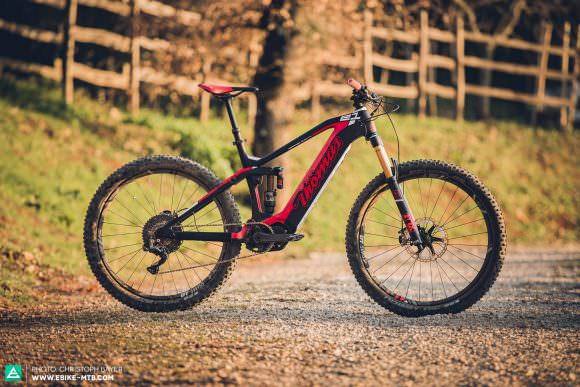It has only taken a handful of years for E-MTBs to elevate themselves to the upper echelons of cycling, graciously earning the mantel of the sport’s avant-garde. This test has gathered the current (and imminent) pinnacle of the crop, pooling the bikes that are filled to the brim with innovation and technology. But, in the pursuit of technology, have they fallen wayward of rideability? And is there such a thing as the perfect E-MTB?
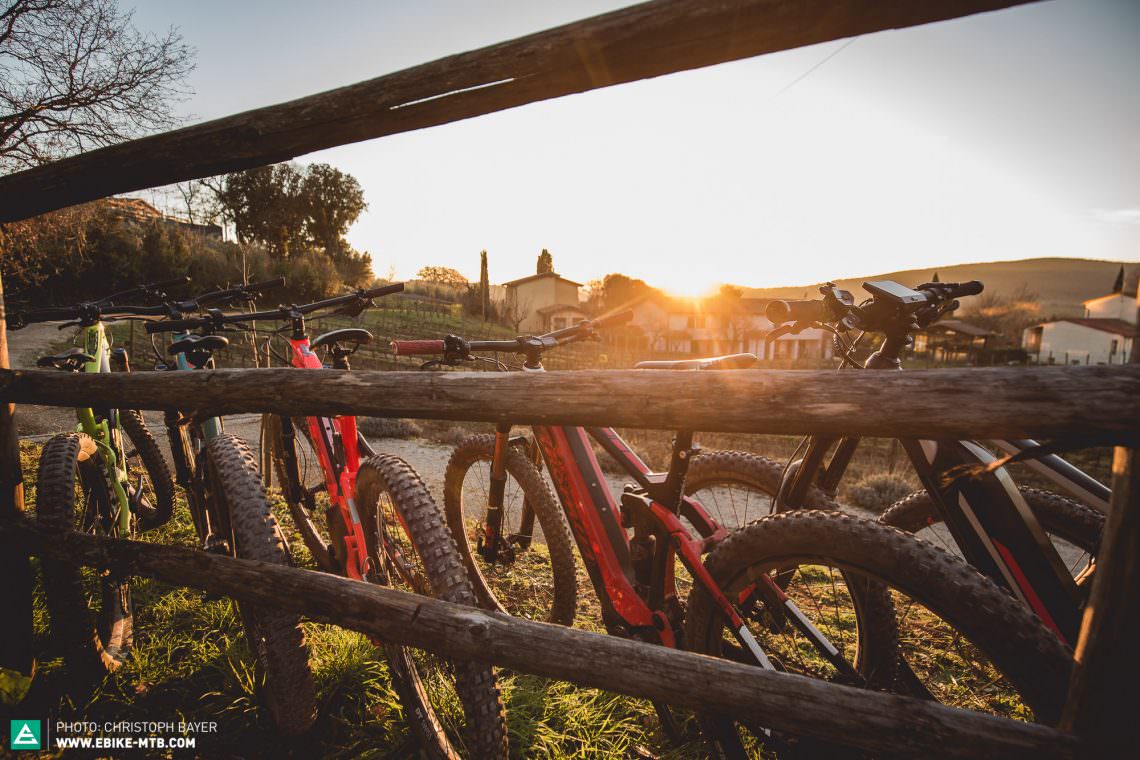
Over the past four years, it’s easy to see just how extreme the development of E-MTBs has been, as we’ve charted and experienced their progress alongside the growth of this magazine. In the early days, E-MTBs were basically just mountain bikes that had a motor fitted onto their frames (to varying degrees of success). The industry soon realized that future success would not only need technological advancements, but also a major overhaul of the mindset of the masses. Today, E-MTBs can be defined as sporting tools in their own right, flaunting their own well thought-out concepts and intelligence. The idea of ‘efficiency’ has been completely redefined by E-MTBs, and former categories have been rendered obsolete. Dubious? The test fleet in this issue is proof of a new understanding; these are the true do-it-all bikes, going up climbs like XC whippets but still riding with generous stability on descents. Today’s E-MTBs can no longer be pigeonholed by their suspension travel, tire size, or weight – forget terms like cross-country, all-mountain, or freeride, and meet the new generation.


Do we Need E-MTBs With Any Less Than 130 mm of Travel?
We’re firmly in the nay-saying camp here. A short-travel E-MTB with minimal suspension doesn’t bring many advantages to the table against its longer-travel counterpart. More travel means more comfort, more stability, and more fun without any infringement on climbing ability, or how much battery range you’ve got. We’ve tested this in the lab, on the trails, and in reality: a bike with more suspension is just as suited to your commute as it is to going full gas around your home trails. But it isn’t black and white, and – as this test fleet proves – there are certain crucial elements to consider.
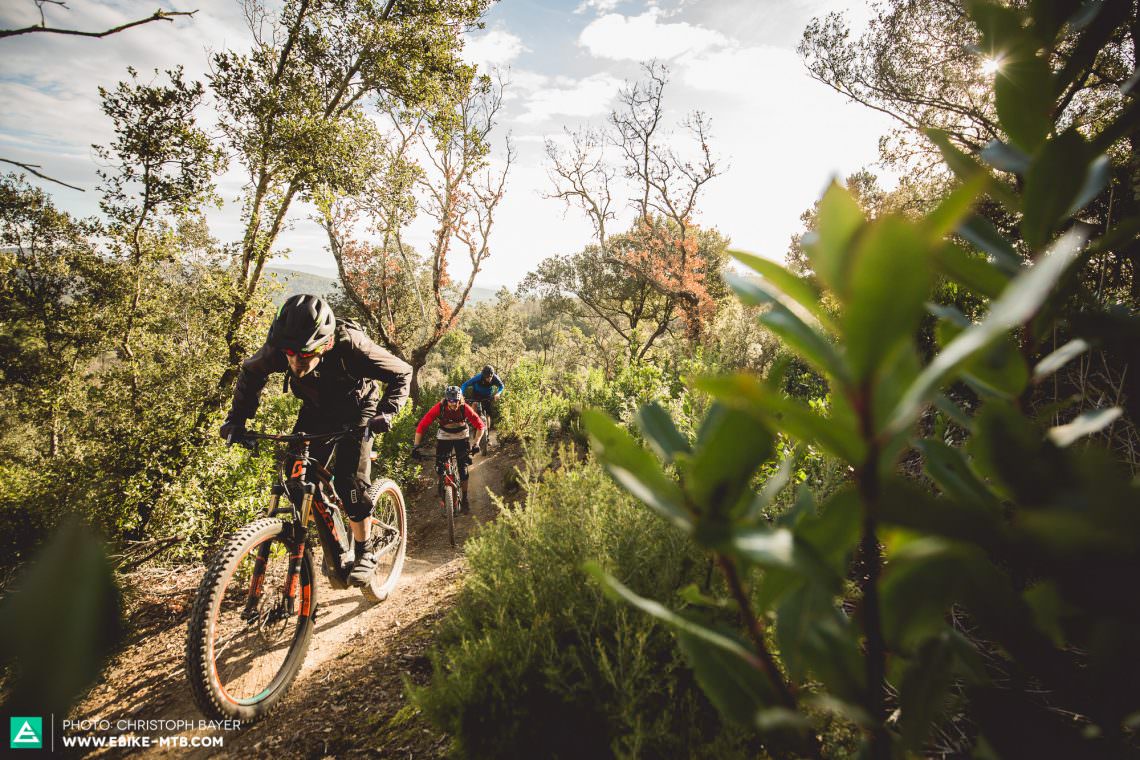
Sorted geometry is a must-have
Evolving over thirty years, conventional (motorless) trail riding mountain bikes have now adopted a sort of geometry norm. E-MTBs are able to profit from this very know-how and skip years of trial and error: the closer the geometry of an E-MTB reflects a regular mountain bike, the better the E-MTB will climb and descend off-road. Right now, the E-MTBs on test all appear to have taken this on board, and as a result they all boast a sorted, balanced geometry. So far, so good.
Heavy where heaviness counts: the right spec
Weight is an inevitability that makes a huge impact on how a bike handles. The three leanest bikes on test here – the FOCUS JAM2, the STEVENS E-Sledge+ ES, and the Thömus Lightrider E1 – delivered the most agile and direct handling. However, be wary of being a sucker for a sleek, low weight; it won’t always be synonymous with more fun on the trails. For stable handling and sustained satisfaction, having the right spec is way more important. You need tires that grip, brakes that anchor you, wheels that won’t buckle, and first-rate suspension for comfort. The best thought-out and composed build spec came on the MERIDA eONE SIXTY, whose reliance on the lightweight Shimano drivetrain keeps it at the daintier end of the weight spectrum.

Comparing the motors
Over the past few months we’ve ridden various prototypes of the new Shimano STEPS E8000 MTB system, and now we’ve finally got hold of the finalized motor. It’s dropped at exactly the right time to go up against the current most important systems from Bosch, Brose, Yamaha, and Panasonic. The size and weight of a system are crucial factors that determine how well the motor can integrate visually into the bike. However, the easily measurable and comparable features are power delivery, extent of the power, ergonomics, noise, and decoupling at 25 km/h. We created a designated test route and pitted the machines against each other using a special watt-measuring system.
Our findings? The Bosch has slightly higher maximum power, but its big size, abrupt binary “on-off” power delivery, and the bulky integration of its display are no rival for the Shimano system. Brose have come up trumps, designing a motor that behaves with more natural characteristics. They’ve also updated the software to eliminate the once-common concern that the motor would switch off if it got too hot. In terms of power though, the Brose motor is worlds apart from its Shimano and Bosch peers. On our 600 metre climb, with a gradient of 11%, the Brose could only clock an average time of 2 minutes and 38 seconds, while the Bosch-equipped bike stopped the clock at 2:16, and Shimano at 2:21. In the name of fairness, the testing was carried out with a constant watt exertion from the rider and gearing that used the optimal cadence for the motors.
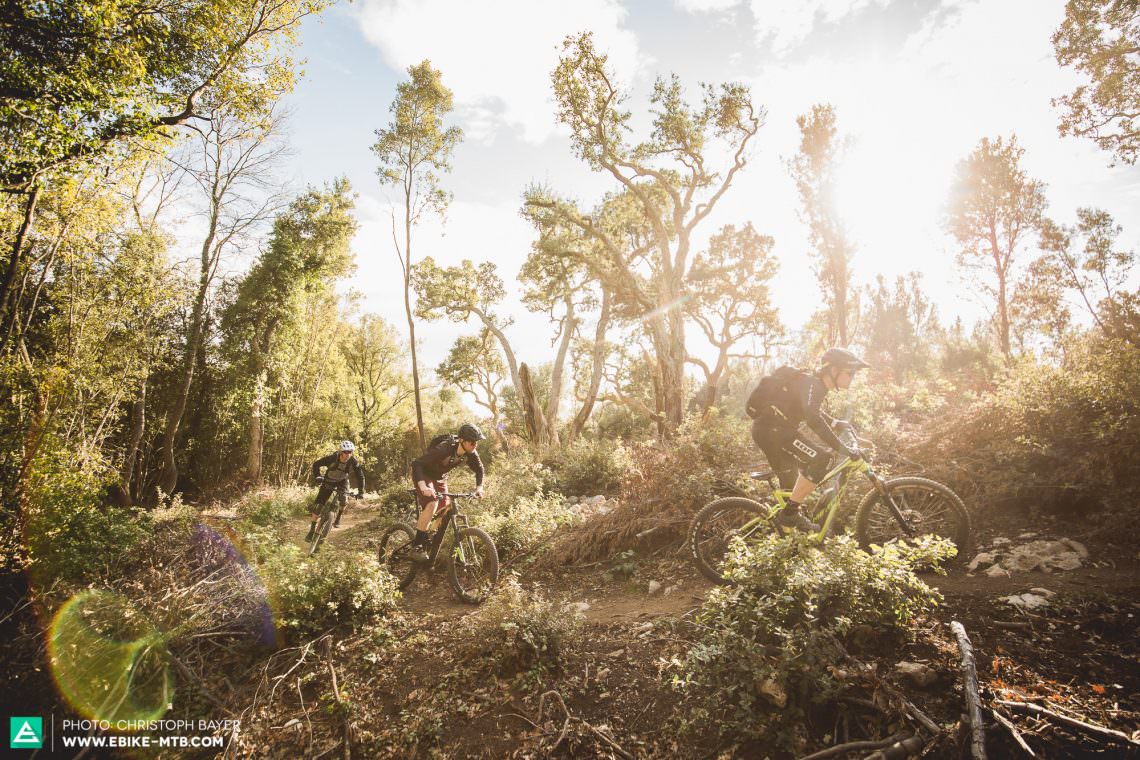
The brand new dual-geared Panasonic motor has a giant gear range, good torque, and a compact build, but its handling is affected by its heavy weight. Each time you shift the front chainring, you also have to take a major pause while pedaling, which is detrimental on climbs. Plus, it’s questionable just how useful a 2x set-up is on an E-MTB where you’re limited to 25 km/h (although it’s a different case if we’re talking about speedy S-Pedelecs). We only had an older Yamaha model on test instead of their latest PW-X system, and we noted that its power still suffers when using a high cadence.
| Motor | Ride Characteristic | Decouples at 25 km/h | Time 600m Test Route* | Time Gap |
|---|---|---|---|---|
| BoschPerformance CX | powerful, great momentum, digitally feel (on/off) | no | 02:16 | – |
| ShimanoSteps E8000 | powerful, progressive power output, easy to dose the power | yes | 02:21 | 3.68 % |
| Panasonic | powerful, present torque, easy to dose the power | yes | 02:23 | 5.14 % |
| YamahaPW | power output heavily dependent on cadence | yes | 02:33 | 12.50 % |
| Brose | kicks in naturally, quiet, less powerful | yes | 02:38 | 16.18 % |
*600 metre test uphill with an average gradient of 11 %. Identical tires and tire pressures. Suspension locked-out. Ridden with the highest level of pedal-assist and a constant 150-watt exertion by the rider, measured by a power metre.
Overview of the Test Bikes
| Bike | Price | Weight | Motor | Battery |
|---|---|---|---|---|
| BULLS E-Core Di2 FS 27,5+ | € 5,899 | 23.96 kg | SHIMANO | 504 Wh |
| CUBE Stereo Hybrid 160 Action Team | € 5,799 | 22.77 kg | BOSCH | 500 Wh |
| FLYER Uproc7 8.70 | € 7,199 | 25.29 kg | PANASONIC | 432 Wh |
| FOCUS JAM2 FACTORY | € 5,499* | 21.30 kg* | SHIMANO | 386 Wh* |
| Giant Full-E+ 0 SX | € 6,799 | 22.58 kg | YAMAHA | 496 Wh |
| Haibike XDURO AllMtn 8.0 | € 5,999 | 22.94 kg | BOSCH | 500 Wh |
| Lapierre Overvolt AM 900+ Carbon | € 6,499 | 22.79 kg | BOSCH | 500 Wh |
| MERIDA eONE-SIXTY 900E | € 5,499 | 21.96 kg | SHIMANO | 504 Wh |
| NOX EDF 6.7 Hybrid | € 4,599 | 21.87 kg | BROSE | 580 Wh |
| ROTWILD R.E+ FS PRO | € 5,699 | 22.01 kg | BROSE | 500 Wh |
| SCOTT E-Genius Tuned 700 Plus | € 6,199 | 22.34 kg | BOSCH | 500 Wh |
| Specialized Turbo Levo FSR Expert 6Fattie | € 6,499 | 22.46 kg | BROSE | 504 Wh |
| STEVENS E-Sledge+ ES | € 5,599 | 21.12 kg | SHIMANO | 504 Wh |
| Thömus Lightrider E1 | CHF 11,045 | 20.54 kg | SHIMANO | 500 Wh |
*(T.E.C. pack: +€ 499 / +2.22 kg / +386 Wh)
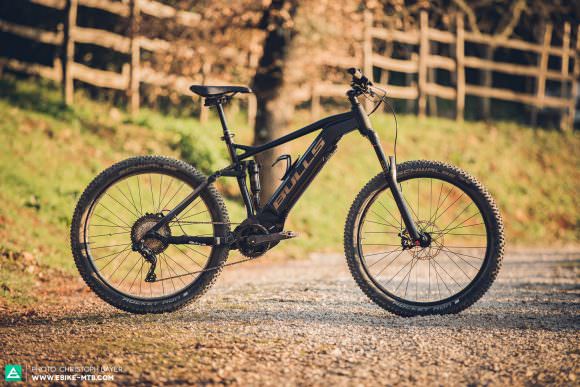
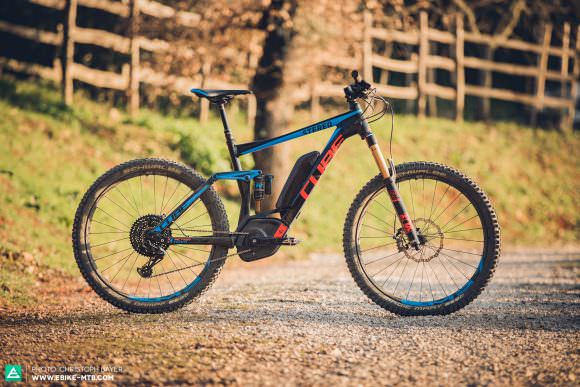

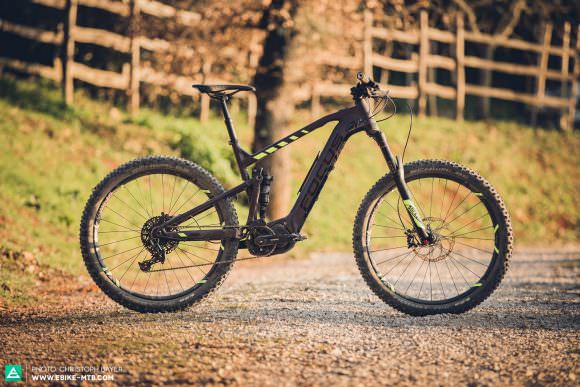
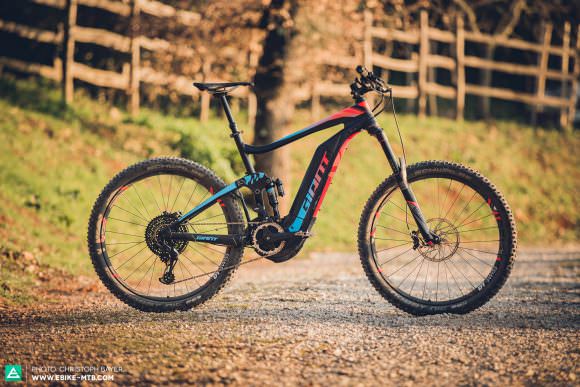
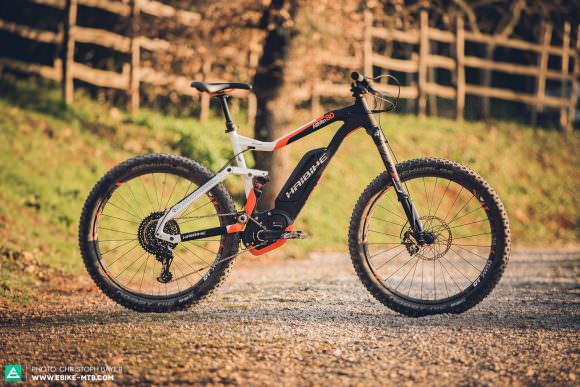

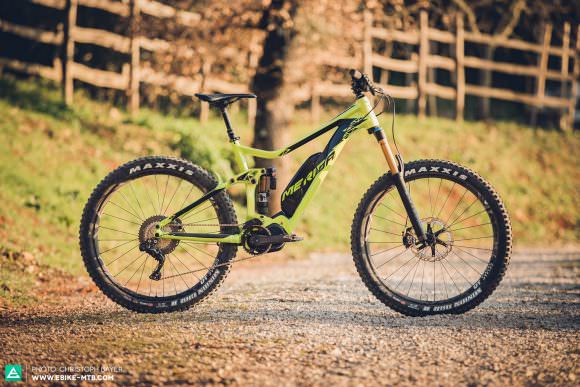

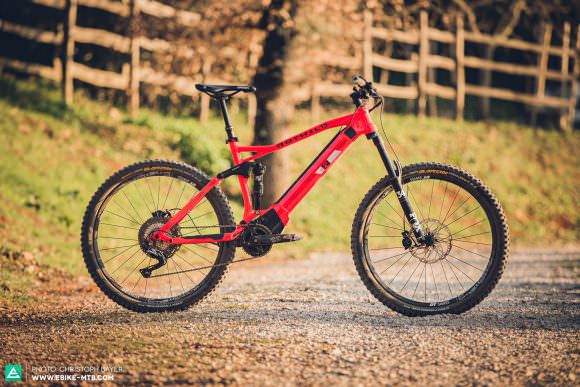
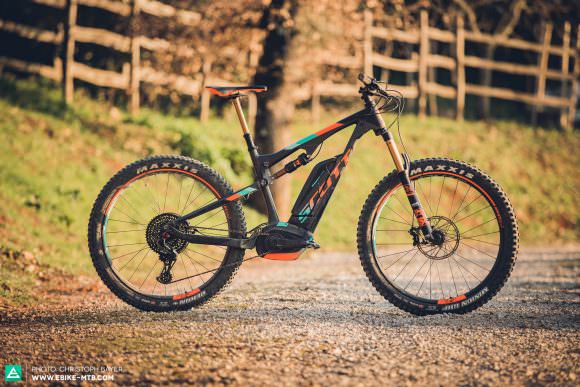
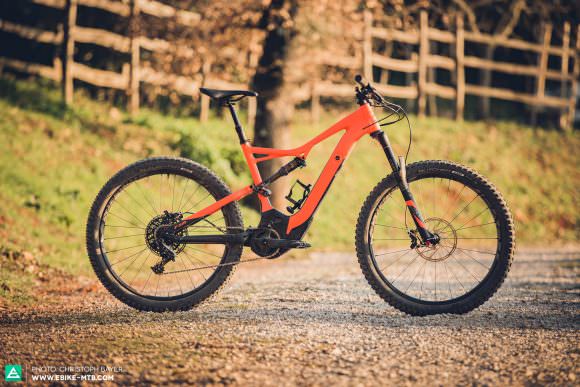
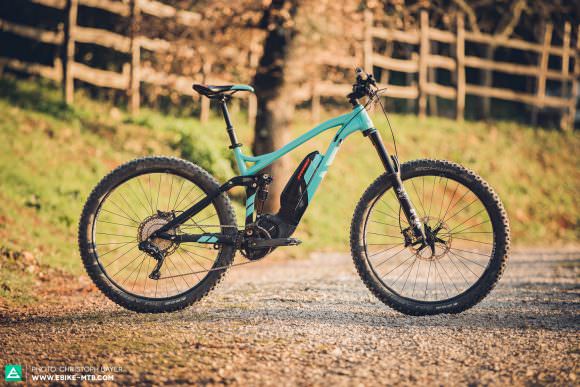
Tops & Flops
Often small details can make a huge difference: seamless integration, first-class ergonomics and carefully selected parts. Easier said than done – here are some of the tops and flops from this grouptest.
Tops
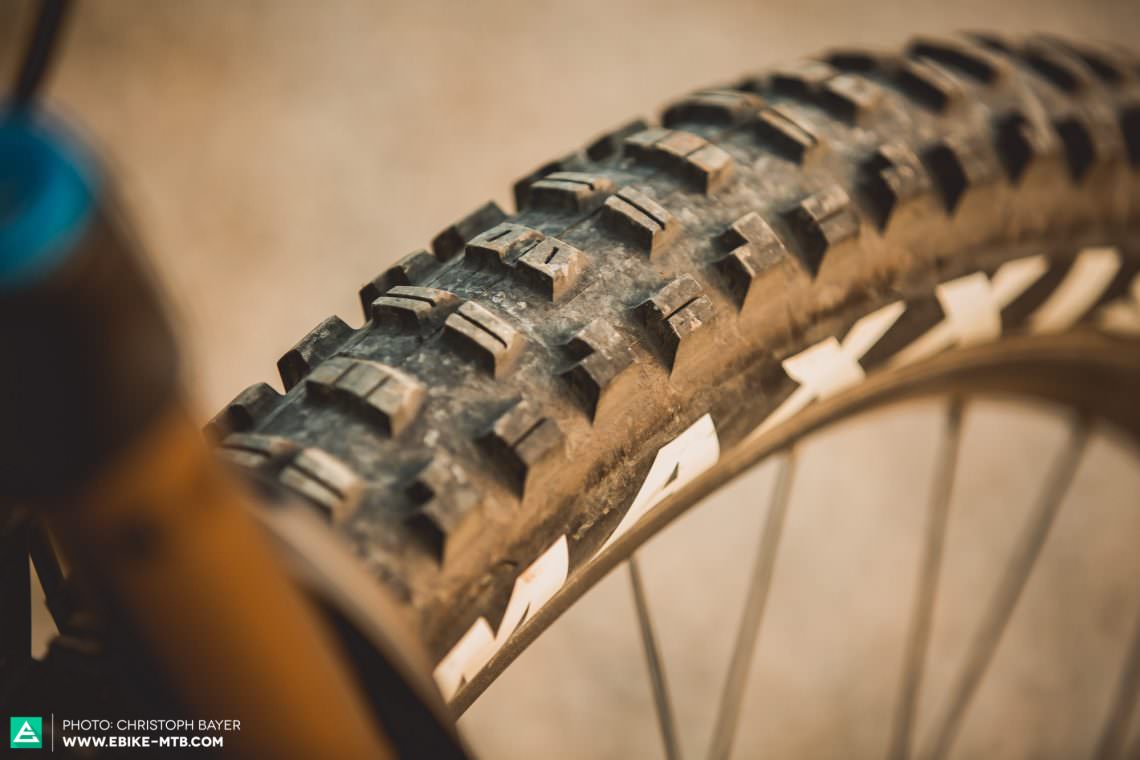
No two plus-size tire models are the same, with each one displaying huge differences in terms of grip, control, and puncture resistance. However, we can unequivocally recommend the MAXXIS Minion DHR II and the Minion DHF in their 2.8″ versions. When it came to grip and puncture resistance, the Schwalbe models lagged behind MAXXIS.

Who knew on/off buttons could be so stylish? Instead of positioning it on the display or the battery, FOCUS have deliberately placed the button on the toptube in a highly aesthetic style. Right from the get-go, this is a sure-fire way to dial up the excitement for a ride.
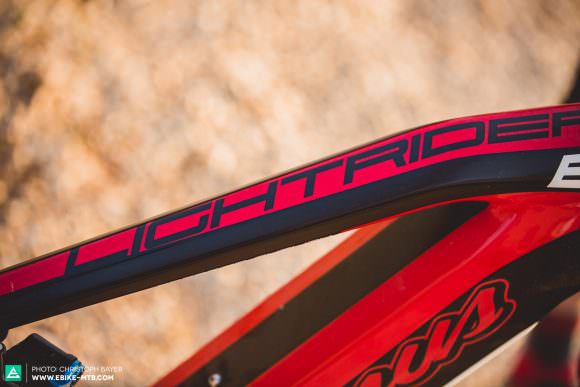
The frame of the Thömus isn’t just a great piece of carbon design, it’s also lighter as a result. Paired with the Shimano STEPS E8000 motor system, the Lightrider keeps its weight down to a minimum and enjoys better handling as a result.
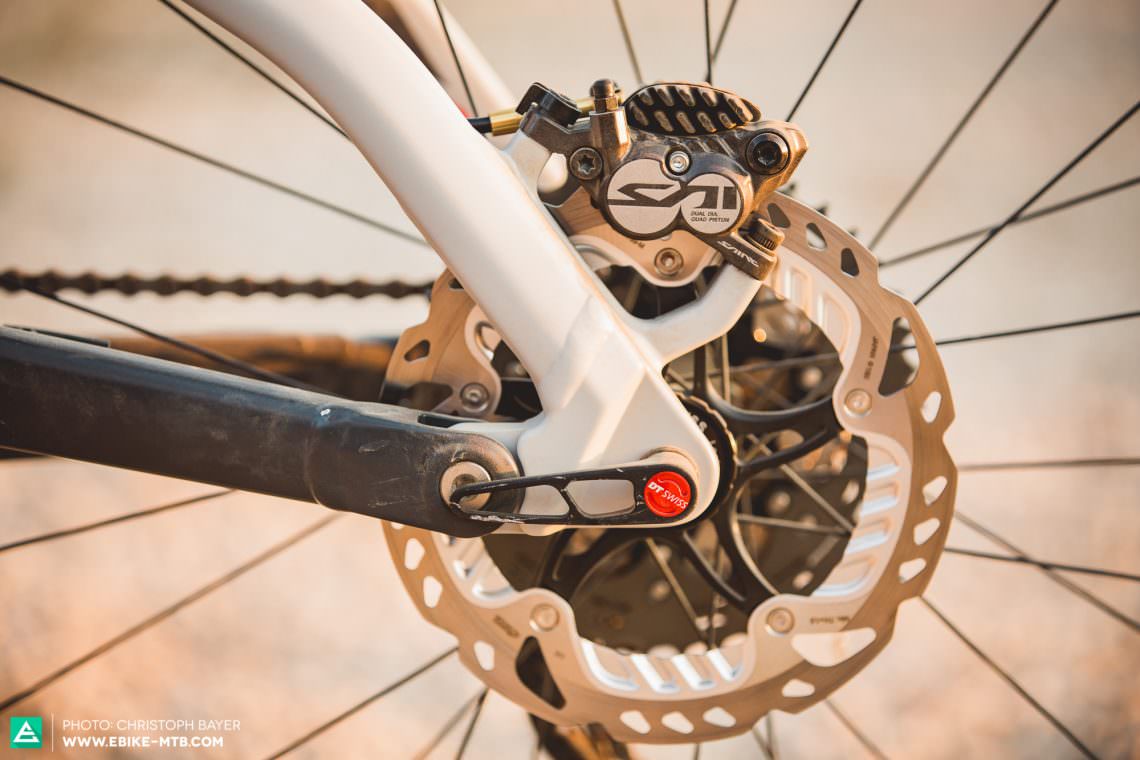
Decent brakes are essential for E-MTBs. Almost every manufacturer now opts for bigger rotors in the pursuit of braking power, but too few are brave enough to add the extra weight of serious brakes like the Shimano Saint, SRAM Guide RE, or MAGURA MT7.
FLOPS
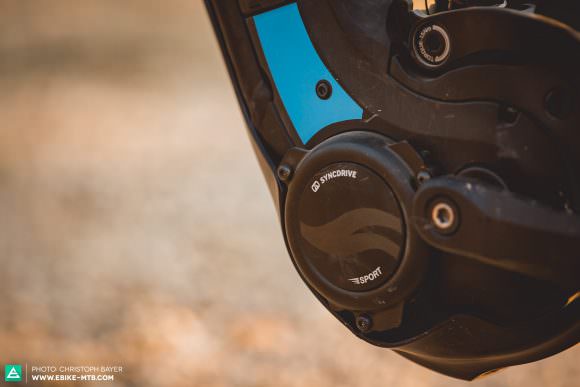
The Yamaha SyncDrive motor on the Giant works at its best when your cadence hovers around 70 rpm. Any quicker and the system can’t cope.
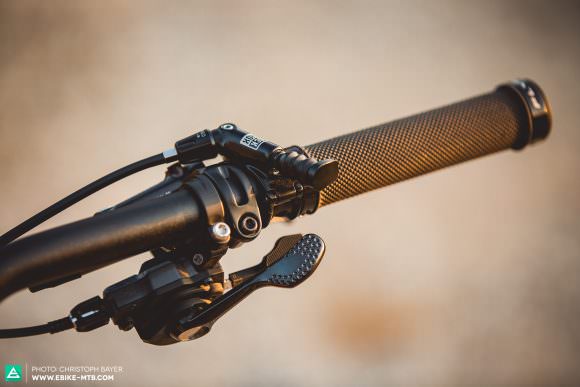
Too many remote levers on the bars can affect how they’re positioned and used. Take a bike with a RockShox Reverb post, for example, and note how its lever positioning won’t be perfect if the bike has a Shimano motor or gearing.
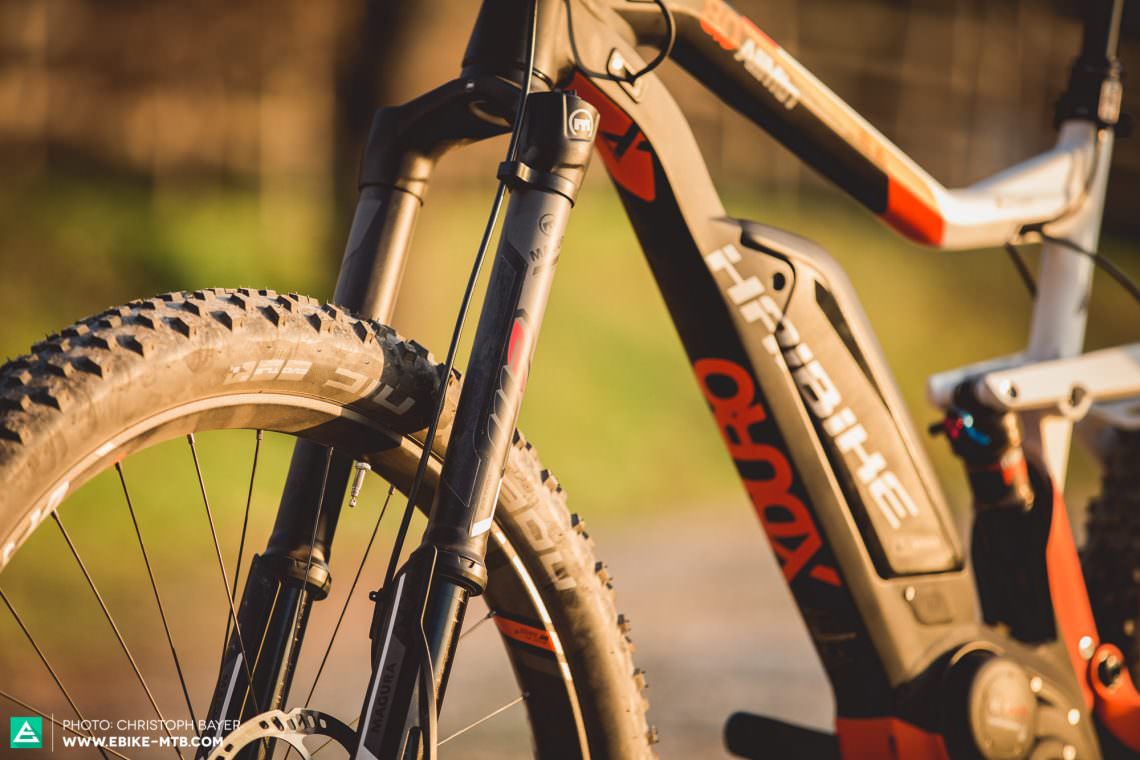
Despite being specifically created for E-MTBs, the MAGURA Boltron fork doesn’t live up to the hype. Its stiffness and damping are no match for the FOX 36 or RockShox Lyrik, and its thru-axle strikes us as over-complicated.
Rating of the Test Bikes
*bigger overlap = greater versatility
**without T.E.C. pack
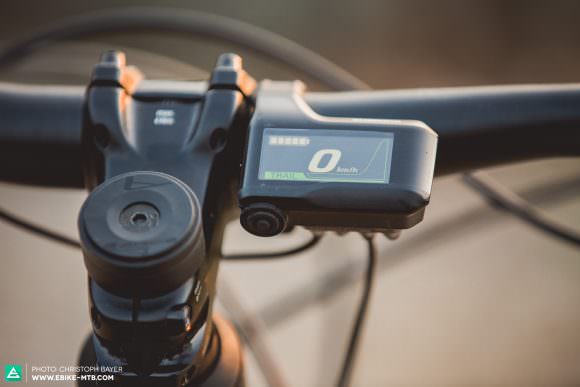
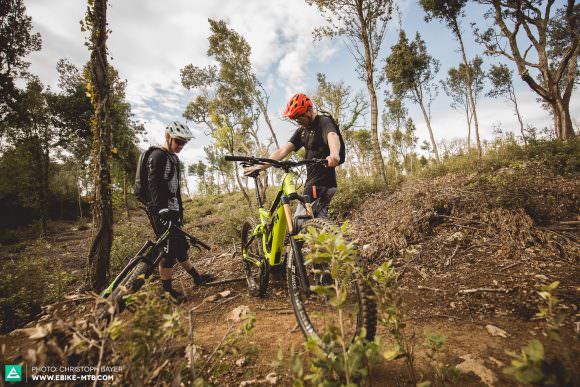
All E-MTBs in Test
So, did we find the ultimate E-MTB for 2017? Did one bike emerge victorious? We’ll answer in the affirmative, but keep reading to find out which model is the ultimate do-it-all steed, a rig that’ll deliver the goods for the majority of riders out there on all manner of terrain. However, this particular bike wasn’t alone in its soaring crusade of the test fleet, as it faced stiff competition from other bikes that valiantly delivered largely faultless performances. Here are the contenders …
Conclusion
Right now, the MERIDA eONE-SIXTY 900E is the sickest, meanest, and slickest E-MTB on the market. Whatever you’re planning to ride, this bike can take it all on and come out grinning. It’s primed for any ride with a consistent and composed build spec, sorted geometry, first-rate suspension, and great power supply from the motor. On technical trails or long, leisurely, mellow rides, the eONE-SIXTY is satisfyingly stable and able to plaster a grin on your face. Delivering a great total package with serious value for money, the eONE SIXTY 900E is both Test Winner and Buyers’ Tip!

All bikes in test: BULLS E-Core Di2 FS 27,5+ | CUBE Stereo Hybrid 160 Action Team | FLYER Uproc7 8.70 | FOCUS JAM2 FACTORY | Giant Full-E+ 0 SX | Haibike XDURO AllMtn 8.0 | Lapierre Overvolt AM 900+ Carbon | MERIDA eONE-SIXTY 900E | NOX EDF 6.7 Hybrid | ROTWILD R.E+ FS PRO | SCOTT E-Genius Tuned 700 Plus | Specialized Turbo Levo FSR Expert 6Fattie | STEVENS E-Sledge+ ES | Thömus Lightrider E1
Special thanks to Bike Hotel Massa Vecchia!
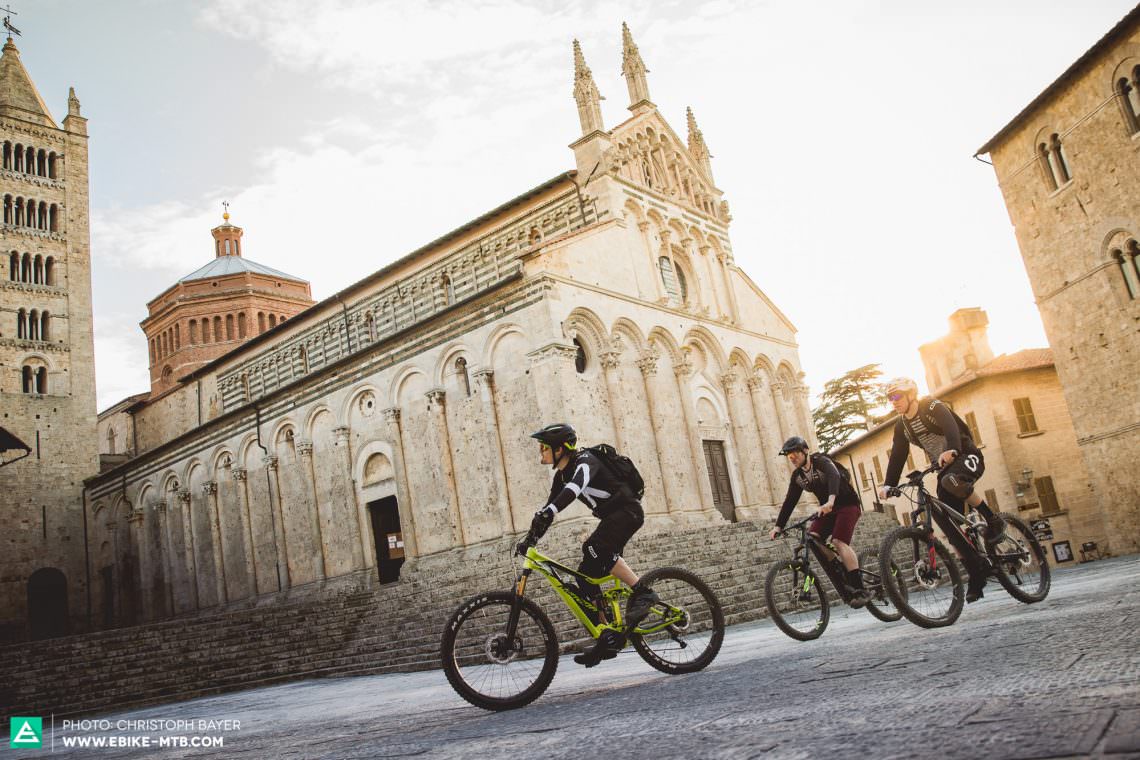


Did you enjoy this article? If so, we would be stoked if you decide to support us with a monthly contribution. By becoming a supporter of E-MOUNTAINBIKE, you will help secure a sustainable future for high-quality cycling journalism. Click here to learn more.
Words: Photos: Christoph Bayer Video: Maximilian Eckmann




